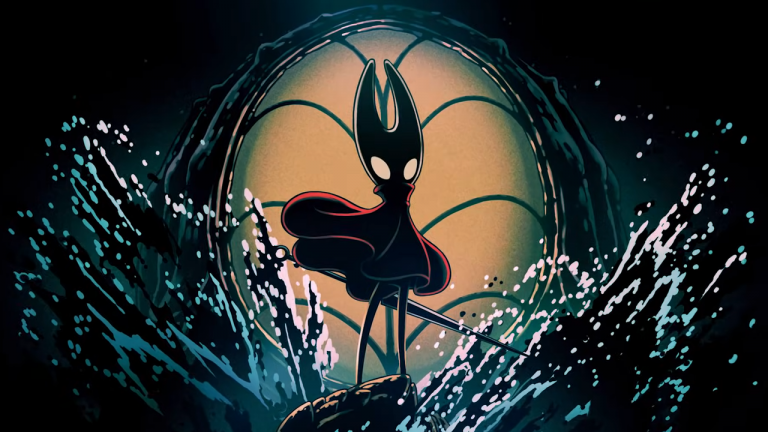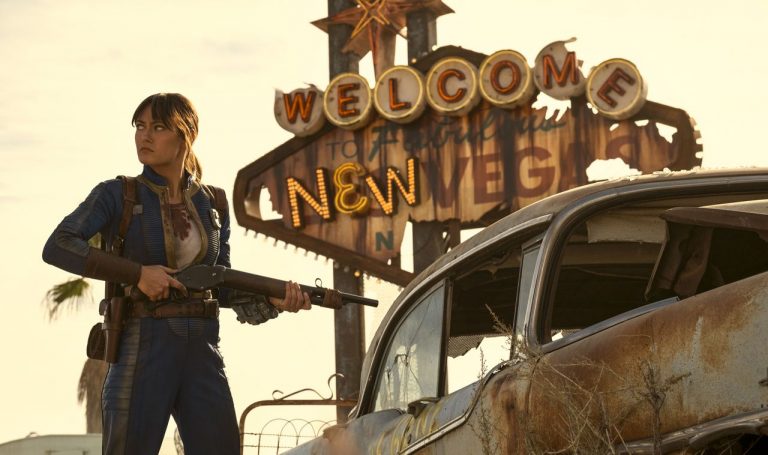In the grand theater of Dungeons & Dragons 5th Edition, where swords clash and spells whirl, there lies an often underestimated art: the unarmed strike. This fundamental aspect of combat, seemingly straightforward with its punches, kicks, and headbutts, is anything but simplistic. Beneath the surface of what appears to be mere brawling, lies a complex set of rules that can dramatically alter the tide of battle. This article plunges into the depths of these rules, unearthing the strategic nuances that can turn a simple fist into a weapon formidable enough to rival enchanted blades and ancient sorceries.
The unarmed strike in D&D 5e is a testament to the game’s dedication to versatility and detailed combat mechanics. Whether it’s a rogue’s swift knee to the gut or a monk’s precise palm strike, these actions are governed by specific rules that dictate their efficacy. From the damage they deal to the modifiers applied, understanding these rules is crucial for players who wish to master the art of unarmed combat. It’s not just about throwing a punch; it’s about knowing how that punch interacts with the intricate world of D&D mechanics.
Venturing further, we’ll explore how various classes, races, and even magical items can influence one’s proficiency in unarmed combat. The rules for a brawny barbarian’s bear-like swipe differ vastly from those of a nimble monk’s flying kick. Similarly, the innate abilities of certain races and the enchanted power of specific items can turn an ordinary unarmed strike into a devastating blow. In the following sections, we’ll dissect these elements, providing a comprehensive guide to mastering unarmed strikes and understanding their place in the complex tapestry of D&D 5e combat.
Basic Mechanics of Unarmed Strikes
Unarmed strikes in Dungeons & Dragons 5e offer a unique form of combat, distinct from the use of weapons or magic. According to the Player’s Handbook, an unarmed strike can be any part of the body — a punch, kick, headbutt, or any other physical blow. These strikes deal bludgeoning damage equal to 1 plus the character’s Strength modifier. A critical aspect to note is that while unarmed strikes are considered melee weapon attacks, they are not weapons in themselves. This distinction means they don’t interact with game features that require a weapon, such as certain spells or class abilities. It’s a subtle yet significant rule that adds depth to character strategies and combat choices, especially for players looking to specialize in unarmed combat.
The Role of Strength and Dexterity
In unarmed combat within D&D 5e, two main attributes play a crucial role: Strength and Dexterity.
Strength: This is the primary attribute for unarmed strikes, affecting both the attack roll and the damage dealt. A higher Strength score increases the likelihood of landing a blow and also boosts the damage inflicted.
Dexterity: Primarily important for certain classes, such as Monks, who can opt to use Dexterity instead of Strength for their unarmed strikes. This switch allows for a more agile, precision-based combat style.
The choice between using Strength or Dexterity for unarmed strikes often depends on the character’s class and combat style. Strength-based characters might rely on sheer power, while Dexterity-focused fighters use speed and precision. Understanding this distinction is key to optimizing a character’s combat capabilities, especially in scenarios where brute force or finesse plays a pivotal role in the encounter.
The flexibility to choose between Strength and Dexterity for unarmed strikes not only allows for a variety of combat styles but also caters to different character builds and backstories. A street-smart rogue might rely on quick, Dexterity-based jabs, while a burly brawler might favor powerful, Strength-driven punches. This versatility adds a layer of personalization and strategic depth to each character, making every unarmed strike a reflection of the character’s skills and history.
Unarmed Strikes Across Different Classes
Dungeons & Dragons 5e showcases a diverse range of classes, each bringing its unique flair to unarmed combat. While some classes, like the Monk, are innately designed for unarmed prowess, others may find their way into this style through different means. This section delves into how unarmed strikes manifest across various classes, highlighting the distinct mechanics and abilities that each brings to the table. From Monks, who elevate unarmed combat to an art form, to Barbarians, who might channel their primal rage into raw, physical power, the world of D&D offers a multitude of ways to approach unarmed combat, each with its own set of rules and flavor.
The Monk: Masters of Unarmed Combat
In the realm of D&D 5e, Monks stand as the epitome of unarmed combat mastery. Their martial arts training allows them to use Dexterity instead of Strength for attack and damage rolls with unarmed strikes, lending a fluid and precise quality to their fighting style. This ability not only provides versatility in combat but also aligns with the Monk’s thematic focus on agility and skill.
Monks also have a unique feature that enhances their unarmed strikes: their Martial Arts die. This die replaces the standard damage of an unarmed strike, starting at 1d4 and scaling up as the Monk gains levels. This progression reflects the Monk’s increasing mastery over their body and technique, turning their very limbs into deadly weapons.
Furthermore, the Monk’s Ki features, like Flurry of Blows, add additional layers to their unarmed combat capabilities. These abilities allow Monks to unleash a barrage of strikes in a single turn, emphasizing their role as swift and relentless fighters. The Monk class thus offers a comprehensive and nuanced approach to unarmed combat, making it an ideal choice for players who wish to specialize in this area.
The Barbarian’s Path of the Beast
The Barbarian class, known for its raw strength and ferocity, offers a unique twist on unarmed combat through the Path of the Beast subclass. When Barbarians of this path enter their rage, they can manifest natural weapons, which include options like claws, fangs, or a tail. These natural weapons are considered part of the Barbarian’s body, yet they function with the mechanics of weapon attacks.
This subclass allows Barbarians to use their primal nature to enhance their unarmed combat capabilities. The natural weapons they manifest come with their own set of benefits and can be used effectively in various combat scenarios. For example, claws might grant multiple attacks in a single action, while fangs could deal significant damage and potentially heal the Barbarian.
The Path of the Beast thus provides a unique and thematic way for Barbarians to engage in unarmed combat, blending their inherent rage with the primal essence of wild beasts. This subclass not only broadens the scope of unarmed combat in D&D but also adds a flavorful and immersive element to playing a Barbarian focused on close-quarters physical combat.
Racial Traits and Unarmed Strikes
The choice of race in Dungeons & Dragons 5e can significantly influence a character’s proficiency in unarmed combat. Various races come with unique traits that enhance their natural unarmed strike capabilities. These racial abilities can range from increased damage to special effects, adding an extra layer of strategy and flavor to a character’s combat style. In this section, we’ll explore how specific races stand out in their unarmed combat prowess, offering players exciting options beyond the standard unarmed strike mechanics.
Notable Races with Unique Unarmed Abilities
Several races in D&D 5e are renowned for their exceptional unarmed combat abilities, each bringing a distinct edge to the battlefield:
Tabaxi: Known for their feline agility, Tabaxi have natural claws that enable them to use their unarmed strikes effectively. This feature not only adds to their damage output but also fits seamlessly with their agile and predatory nature.
Lizardfolk: With their powerful jaws and rugged scales, Lizardfolk can deliver devastating bites as unarmed strikes, inflicting more damage than a typical unarmed blow. This ability reflects their primal, reptilian heritage and adds a ferocious element to their combat style.
Aarakocra: While known for their mastery of the skies, Aarakocra also possess talons that enhance their unarmed strikes. These natural weapons enable them to execute swift and precise attacks, embodying their bird-like characteristics in combat.
Each of these races offers unique benefits for characters specializing in unarmed combat. Whether it’s the Tabaxi’s clawed swipes, the Lizardfolk’s biting attacks, or the Aarakocra’s talon strikes, these racial traits allow for diverse and thematic unarmed combat experiences. Players who choose these races have the opportunity to explore unconventional fighting styles, making their characters stand out in melee encounters.
These racial traits not only provide mechanical advantages but also enrich the role-playing aspect of the game. A Lizardfolk’s bite, for instance, is not just a combat move; it’s a manifestation of their primal nature. Similarly, a Tabaxi’s claw attack can be role-played as an extension of their feline instincts. Thus, the choice of race can significantly impact both the effectiveness and the narrative depth of a character’s unarmed combat style.
Feats and Magic Items Influencing Unarmed Strikes
In the diverse world of Dungeons & Dragons 5e, feats and magic items play pivotal roles in shaping a character’s combat abilities, including their proficiency in unarmed strikes. These elements can dramatically enhance a character’s unarmed combat efficiency, offering new tactical possibilities and augmenting their natural strengths. This section will delve into the key feats and magic items that specifically impact unarmed strikes, illustrating how they can transform a character’s bare-handed attacks into formidable weapons.
Tavern Brawler and Other Relevant Feats
Among the feats available in D&D 5e, a few stand out for their impact on unarmed strikes:
Tavern Brawler: This feat is particularly notable for characters engaging in unarmed combat. It increases the damage of unarmed strikes to 1d4, bringing them on par with many light weapons. Additionally, it grants the ability to use a bonus action to grapple after a successful unarmed strike. This feat is ideal for characters who embody the rough-and-tumble fighter archetype, adept at using their environment and sheer force to subdue opponents.
Other Relevant Feats: While Tavern Brawler is the most directly relevant feat for unarmed combat, other feats can also enhance a character’s unarmed capabilities indirectly. For instance, feats that improve grappling or mobility can be crucial for a character who relies on close-quarters combat.
These feats add depth to character builds, allowing players to tailor their characters towards a particular combat style. A character with the Tavern Brawler feat might be envisioned as a gritty street fighter, using whatever means necessary to gain the upper hand in a brawl. The choice of feats thus not only affects a character’s mechanical effectiveness but also contributes to their narrative and role-playing identity.
Magic Items for Unarmed Strike Enhancement
D&D 5e features a variety of magic items that can enhance unarmed strikes, providing both practical benefits and flavorful additions to a character’s arsenal:
Insignia of Claws: This item, often overlooked, grants a +1 bonus to attack and damage rolls for unarmed strikes. It’s perfect for characters who focus on natural weapons or unarmed combat, subtly boosting their effectiveness in battle.
Cestus of the Monolith: A unique item that enhances the power of unarmed strikes, making them more lethal and effective. This magic item is ideal for characters who embrace the role of a fearsome unarmed combatant, striking fear and awe into their opponents.
These magic items offer more than just numerical bonuses; they also provide creative opportunities for character development and storytelling. A character wielding a Cestus of the Monolith, for example, could be a renowned gladiator whose fame and fighting style are built around this iconic weapon. Thus, the integration of specific feats and magic items into a character’s build opens up new avenues for combat strategies and narrative exploration, enriching the overall D&D experience.
Conclusion
As our exploration of unarmed strikes in Dungeons & Dragons 5e draws to a close, we find ourselves armed with a deeper understanding of this often-overlooked aspect of combat. Unarmed strikes, far from being a mere fallback for weaponless characters, emerge as a complex and richly varied element of the game. They offer unique opportunities for character development, combat strategy, and storytelling, making them a valuable tool in any player’s arsenal.
Unarmed combat in D&D 5e transcends mere brawling; it’s an intricate dance of mechanics, class abilities, racial traits, feats, and magical enhancements. From the fluid strikes of a Dexterity-based Monk to the primal fury of a Beast Barbarian, and the subtle enhancements provided by feats like Tavern Brawler or magical items like the Cestus of the Monolith, the world of unarmed combat is as diverse as it is fascinating. Each option provides not just a different way to deal damage, but a different way to experience the game and develop a character’s story.
In conclusion, the realm of unarmed strikes in D&D 5e is a testament to the game’s depth and versatility. Whether as a primary combat focus or a supplementary tactic, mastering unarmed strikes can greatly enrich a player’s experience. It challenges players to think creatively, both in combat and in character development, and adds an extra layer of immersion and excitement to the adventure. As players and Dungeon Masters alike delve into these mechanics, they unlock new potentials for heroism, narrative, and the ever-enthralling dance of battle that lies at the heart of Dungeons & Dragons.
The post DnD Unarmed Strike 5e Rules Finally Explained appeared first on LitRPG Reads.










